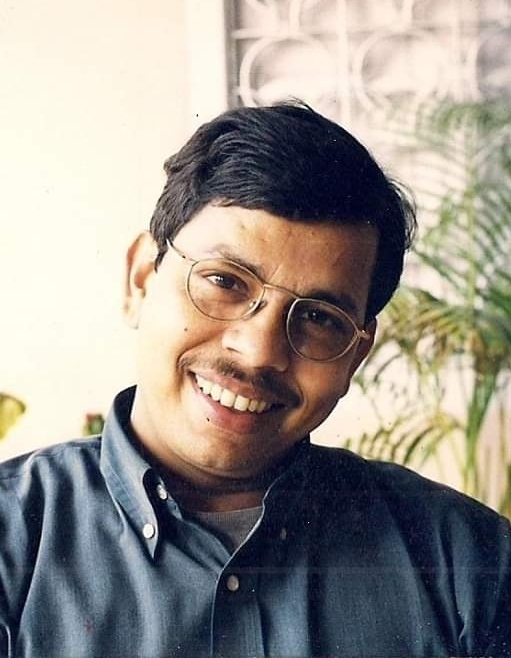
The use of Education Technology (ET) /Information & Communication Technology (ICT) in imparting education/ learning is on the driver’s seat during the lockdown period globally.
It has become inevitable tool in reaching to students and all such people in imparting teaching & learning. Internet is the most useful technology of modern times not only in our daily lives but also for educational purposes. Importance of internet in education goes without saying; it helps the students to research things, and relearn the content taught/discussed in their class rooms.
For the effective education, mere access to Internet information resources is not enough. It is necessary to prepare the students beforehand to work with information or to provide those, who use the distance form of education with special tasks destined to develop intellectual skills of critical thinking, working with verbal texts, multimedia environment, to create all kinds of so-called secondary texts (abstracts, summaries, essays, etc.), to be able to work with information. The usage of the information resources located in the Internet is not such a simple affair.
It requires not only the ability to search for it in the huge ocean of the Internet. But to process it, to use it effectively for the cognitive goals. The efficiency of the use of Internet in education is primarily depending on the preparedness of the teachers and in most of the cases they are unprepared for the practice of integrating the information resources of the Internet, its facilities in teaching and learning process. India came under internet connectivity in 1995 and its growth trajectory led the educational institutions but is it possible to see this as the future online learning option looking at the unequal access to the internet.
As according to the Director General, Cellular Operators Association of India (COAI), ‘’Post COVID-19, following the government’s 40-day lockdown. There has been a surge in online education by schools and colleges across the country. Such an exercise requires the availability of high bandwidth and the telecom industry is fully prepared with 99.9 per cent network capacity. Telecom companies have taken appropriate measures to meet the surge in traffic due to online education and other online activities”.
As per one of the estimates published in March 2020 in the Statista Research Department Report. India is the second-largest internet users in the world, behind only to China. However, as per the report of TRAI, only 34 percent of the total population had access to the Internet in 2017. The figure carries a vast gender disparity, where the ratio of male and female users is approx. 70 percent and 30 percent respectively. An analysis of the rural-urban division of internet usage complexes the internet penetration and shows the disparity.
A whopping 66 percent of the total population lives in rural India. Still, it accounts for just 25.3 percent internet density compared to the 34 percent of the urban population having around 98 percent internet connectivity. As per the March 2020 trends of the Speedtest Global Index. India ranks at 130 out of 141 nations with a download speed of 10.15 Mbps compared to the global average of 30.47 Mbps. India lags behind other South Asian nations, including Pakistan.
The disparity of internet speed exists in rural-urban basis where rural areas still have slow internet availability compared to urban. Under such a situation, infrastructure readiness has to be assessed in terms of household assets ownership. The National Statistical Organization (NSO) 75th Round survey on ‘Social Consumption of Education in 2017-18’ had probed households’ ownership of computers and access to the internet.
Further, the survey probed if a household member of age five years. And above had used internet to find, evaluate and communicate information from any location during the last 30 days preceding the date of survey, via any of the above-mentioned devices, and smartphone, etc. The analysis based on the 75th Round survey only included households. Which had students aged between 5-29 years and were currently enrolled and attending schools/colleges/universities.
The survey showed that 8.3 per cent of households had computers and 21.6 per cent had internet facility. Further, a larger share of households had access to internet facility versus ownership of computers. However, there are large variations between rural and urban areas and intra-regional gaps as well. In urban areas, 20 per cent of households had computers and 39.8 per cent had access to internet. The corresponding numbers in rural areas were 4 per cent and 15 per cent respectively. In the top two urban quintiles, 68.3 per cent and 50 per cent of households had internet access, respectively. This number was 18 per cent in the bottom-most urban quintile. Twenty-nine per cent of households had internet access in the top-most rural quintile and 5.7 per cent in the bottom-most quintile.
The Indian youth are also characterized by limited digital skills. Only 17.6 per cent of the youth could use a computer and 18.4 per cent could access internet. As per the NSO (2019), the ability to use of computer could include any of the following tasks — copying or moving a file or folder. Using copy and paste tools to duplicate or move information within a document. Sending e-mails with attached files (example, document, picture, and video), using basic arithmetic formulae in a spreadsheet, connecting and installing new devices (example, modem, camera, printer), finding, downloading, installing and configuring software, creating electronic presentations with presentation software (including text, images, sound, video or charts), transferring files between a computer and other devices. Writing a computer program using a specialized programming language.
The ability to use internet meant that the household member was able to use internet browser for website navigation. Using e-mail and social networking applications, etc., to find, evaluate and communicate information.
As a matter of fact, relatively speaking, only the top most urban quintiles in India are the most ready for online education. One alternative to online education may be the delivery of education via television. The National Family Health Survey 2015-16 shows that 86 per cent of urban households. And 51.5 per cent of rural households had colour television. In the short-run, the television holds a much more viable, equitable, cost-efficient and scalable alternative than online education. The current crisis has acted as a fillip to encourage digital education.
It is equally important here to look for the judicious mix of Open Educational Resources (OER) along with delivery of education via television /satellite. OER is the teaching, learning and research resources that reside in the public domain or have been released under an intellectual property license that permits their free use. It may include full courses, courses, modules, text books, streaming videos, tests etc. The 2012 OER Paris Deceleration provided the broader guidelines on how to make best use of OER. It has the potential of bridging the gap between formal, informal and non- formal education. Widening the participation in higher education by expanding access for non- traditional learners and promoting Lifelong learning among the broader learners base.
The institutions may repackage and share the already available knowledge on OER, without reinventing the wheels. An independent learner, who has access to Internet, can access the courses of his choice from the best University of the world at a competitive cost. Even UNESCO recommended the use of various tools of distance learning programmes and open educational applications and platforms to reach learners remotely and limit the disruption of education.
The challenges of the lock down may become blessing in disguise in accessing the potential and the capabilities of our educators in responding to the future necessity of online learning.
ABOUT THE AUTHOR

Dr. KD PRASAD
Senior Academician, IGNOU New Delhi

This should be the top result on Google. It’s way better than most tutorials out there. Clear writing, helpful screenshots, and a logical structure. It has everything I needed. Thanks for sharing!